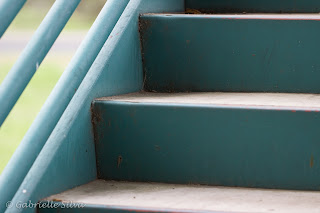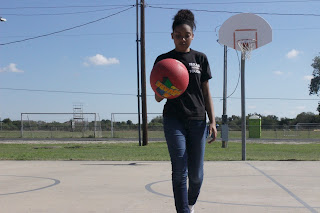Light as the Subject
Tuesday, November 24, 2015
Monday, November 16, 2015
Thursday, November 12, 2015
Monday, November 9, 2015
Stock Photography and Legal Issues
Snapwire: Gabrielle Silva
1. What is a model release? Why do you need one?
1. What is a model release? Why do you need one?
A model release is permission from the model you used, to sell a photo with them in it. You need a model release to prevent getting sued by the models you took pictures of.
2. Why should you keyword your photos?
2. Why should you keyword your photos?
Keywording your photos, will help you to pull them up later when you are looking for a particular type of photo.
3. Why do you have to be careful about shooting images with brand names or logos?
3. Why do you have to be careful about shooting images with brand names or logos?
You have to be careful not to shoot brand names of logos, because they are property of the manufacturer and you can be sued if you don't have the right release forms.
4. Why should you save space?
4. Why should you save space?
You should save space on your photos so if someone buys a photo to use for advertising, they have room to add text.
5. Why do designers like Royalty Free images?
6. Why should designers be careful about using Royalty Free images?
5. Why do designers like Royalty Free images?
Designers like Royalty Free Images because they are widely available and easily accessible.
6. Why should designers be careful about using Royalty Free images?
Designers should be careful about using Royalty Free Images because since they are easily accessible it is very likely that two companies may end up with the same image.
7. What is an alternative to Royalty Free images?
An alternative to Royalty Free Images is Rights Managed Stock Photography.
7. What is an alternative to Royalty Free images?
An alternative to Royalty Free Images is Rights Managed Stock Photography.
8. In your words, what is the difference between Royalty Free and Rights Managed stock photography?
9. What is a legal issue that is covered in the FAQ that you never thought of before you read about it?
"If I photograph my young children in the bathtub and send the film out for processing could the processor turn the film over to the police? Could I be prosecuted child pornography?"
10. Why is it an interesting legal issue to you?
Many times parents will shoot pictures of their children in the bathtub, or sink at a young age for memories sake. It is usually not a matter of pornography but I wasn't aware you could be sued for taking such images of your own children, this is probably something to be aware of even if it has no such meaning in your photos.
Royalty Free Images are photos that are widely spread, commonly used, and available to all advertisers, while Rights Managed Stock Photography allows the buyer to cut costs of "commissioning" a special shoot but can prevent the photo from being used for the same type of product.
9. What is a legal issue that is covered in the FAQ that you never thought of before you read about it?
"If I photograph my young children in the bathtub and send the film out for processing could the processor turn the film over to the police? Could I be prosecuted child pornography?"
10. Why is it an interesting legal issue to you?
Many times parents will shoot pictures of their children in the bathtub, or sink at a young age for memories sake. It is usually not a matter of pornography but I wasn't aware you could be sued for taking such images of your own children, this is probably something to be aware of even if it has no such meaning in your photos.
Thursday, November 5, 2015
Wednesday, November 4, 2015
Motion Preview
1. Why slow down your shutter speed?
2. What are the two primary ways to create motion in a photograph?
You can create motion in your photography by either having the subject moving or moving the camera itself.
3. Why use a Shutter Priority mode?
Using shutter priority mode will give the photographer full control of shutter speed while the camera sets aperture. This ensures that photographer a well exposed shot while they can easily change shutter speeds.
4. What are three primary methods to compensate for long shutter speeds when there is too much light?
Three primary methods to compensate fo long shutter speeds when there is too much light are:
8. What does the "AI Servo" auto focus mode do?
When you slow down your shutter, you allow the camera shutter to be open long enough to capture the movement of your subject.
2. What are the two primary ways to create motion in a photograph?
You can create motion in your photography by either having the subject moving or moving the camera itself.
3. Why use a Shutter Priority mode?
Using shutter priority mode will give the photographer full control of shutter speed while the camera sets aperture. This ensures that photographer a well exposed shot while they can easily change shutter speeds.
4. What are three primary methods to compensate for long shutter speeds when there is too much light?
Three primary methods to compensate fo long shutter speeds when there is too much light are:
- Use a smaller aperture
- Lower the ISO
- Use a ND filter
When attempting panning, you should start with about a 1/60 or 1/15 shutter speed.
6. From the video, why is the center auto focus point important for panning?
6. From the video, why is the center auto focus point important for panning?
The center auto focus point is important for panning because it is the fastest auto focus point and because you can use it as a target to follow to ensure that your subject will come out crisp and clear.
7. From the video, why should you use Continuous Drive mode of panning?
7. From the video, why should you use Continuous Drive mode of panning?
You should use continuous drive mode when panning because you have a higher chance of getting a perfect shot because it takes more pictures quicker than the single shot mode.
AI-Servo tracks focus on moving subjects so as your subject moves your camera constantly updates focus to keep the subject as sharp as possible.
9. What are the advantages of shooting in "AI Servo" auto focus mode for sports/action photography?
9. What are the advantages of shooting in "AI Servo" auto focus mode for sports/action photography?
The advantages for shooting in AI Servo auto focus mode for sports/ action photography is that as a photographer you can take multiple pictures of your subject as they move because the camera will automatically update the focus as the subject moves.
10. Why should you consider using Back Button Focus for action photography?
Back button focus is a good option to be considered for action photography, because it allows you to use one shot and continuous modes interchangeably. With back button focus on you can use the continuous shot mode to take photos of moving objects and single shot mode for still objects, you simply have to set the focus once and let go with the back button focus and press the shutter down to get a single shot.
11. What are some of the challenges of Back Button Focus?
11. What are some of the challenges of Back Button Focus?
Some challenges that come with using back button focus are mostly adjusting and getting use to the different mode since most photographers don't standardly shoot using back button focus.
Subscribe to:
Posts (Atom)







































